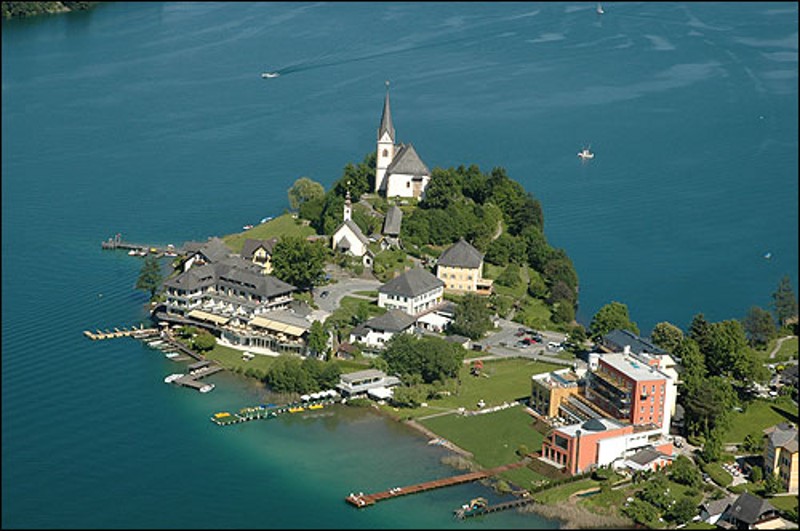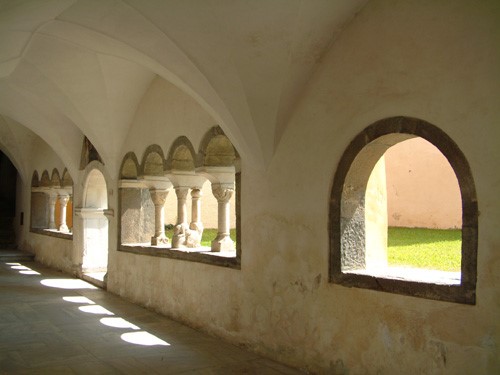Carinthia is Austria’s Romanesque heart: a region rich in cathedrals, castles, monasteries and fortresses surrounded by a scenic landscape and built in strategically important locations in order to preserve the inhabitants’ deep religious faith.
Discovering the Romanesque period in Carinthia means opening a door to culture and nature at any season of the year. These impressions will be unforgettable. It is a region bedded among magnificent mountains and valleys, popular for sports and leisure activities, rich in unexpected treasures.
Church Peninsula Maria Wörth
On the peninsula Maria Wörth at the lake Wörthersee you can discover two churches with crypt and Romanesque circular carnary.
Maria Wörth already came into Freising’s possession between 875 and 883. The church, which was mentioned for the first time in a document in 894, was made a collegiate monastery under Bishop Otto of Freising probably around the year 1146.
Around this time, the second church of Maria Wörth, the so-called winter or rosary church (Winterkirche, Rosenkranzkirche), was also consecrated. In 1279, a charnel house was built next to the collegiate church.
Despite some constructional changes, both the charnel house and the two churches provide a magnificent view of Romanesque architecture due to the period in which they were built. The collegiate church has a crypt and the winter church offers its visitors a splendid fresco cycle from the 12th century.
In the 20th century, the picturesque place on the southern shore of Lake Wörther developed into an internationally popular tourist and health resort.
Highlight Sites:

Millstatt Abbey
Silent witnesses to early churches in Millstatt: the ornament stones from around the year 800 are immured in the monastery complex that exists today. The monastery was established and constructed at the northern shore of Lake Millstatt in the late 10th century.
The High Romanesque cloister with its distinct traces of Romanesque artistic craftsmanship can be traced back to the same time period.
The collegiate church, too, provides the viewer with countless details from the Romanesque period. During Lent a late Gothic Lenten Cloth (1593) distorts the view of the Baroque high altar in the church. In the Domitiankapelle (Domitian’s Chapel), the mortal remains of Millstatt’s legendary Saint Domitian rest in a reliquary, constructed in 1643. The Baroque design of the originally Romanesque chapel relates to the life and work of the Saint.


